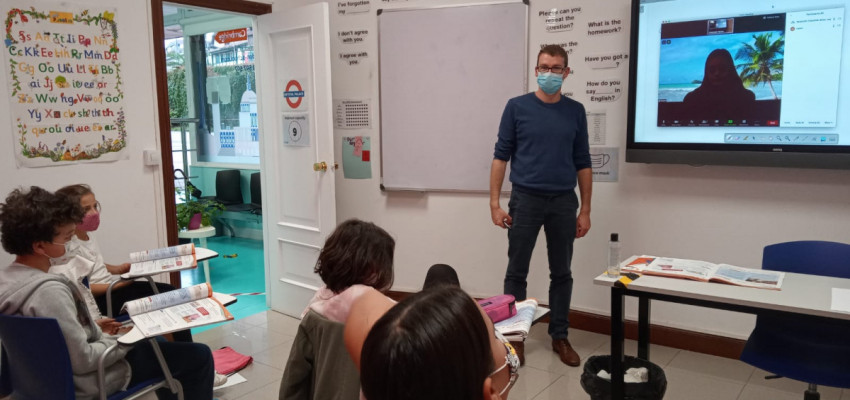Tuesday, October 20, 2020

As we mentioned in our previous blog post, the current pandemic has altered the way we deliver our classes forever and we predict that things are never going to go back to the way they were. But has this change only come about because of the current situation or has it been going that way for a while? Over the past few years, we’ve been hearing a lot more about flipped classrooms, digital solutions and blended learning, but if you’re anything like us you probably just brushed it off as something that would be more hassle than it’s worth. Oh, how wrong we were! Yes, sometimes it takes a little longer to get your head around the concept of a varied approach to class delivery and the idea that classes can be just as effective outside of the physical classroom. One thing that these past 6 months have taught us is that the trends that have been hovering around for a while have been preparing us for this moment, and it’s only now that we get to experience the benefits of them first hand.
Whilst there are many advantages of a more flexible approach to this ‘ever-changing classroom’, we also understand that the adaptation process to this new way of teaching is not without its challenges. As we are confronted with new issues to overcome on a daily basis, we also have to consider how best to prepare ourselves for whatever situation may come our way. But how does this relate to the way we plan our classes?
Below you’ll find our top 10 planning tips which will help you face every teaching eventuality with confidence and positivity.
Always make sure you have access to and have downloaded/checked the electronic versions of the coursebooks you are using in class. You never know when you’re going to need to switch to using it online, and life is so much easier when you have the digital resources available at the mere click of a button.
The worst-case scenario for a teacher these days is to be given a last-minute change to a class and for the technology not to work just before the start of the class. For this reason, it’s wise to test your technology regularly so that you know it’s going to work should the need arise.
There may be times at the moment when students need to attend catch-up classes at short notice, or they will need to be sent work to do at home. It is therefore essential that you keep your records up to date with what you’ve done in the class, so there is no doubt about what students have missed.
Don’t get us wrong, we love the internet, but it can sometimes be the source of extreme frustration. There’s nothing worse than dead time in class when the Wi-Fi won’t let us play that audio or show that video that we need. Ensure you download what you need before the class, so you remove that possible roadblock.
If possible, create any extra material electronically so that it’s ready to go should you have to make a change to online teaching at the last minute. If you have some discussion questions, why not prepare them on a PowerPoint for use in class? If you have images to use, why not make them into a PDF that you can show on screen?
We all know that part of being a good teacher means good organisation and this is especially true for these uncertain teaching times. Make sure you have any useful material organised well on your computer, so that you can access it easily and so that you don’t waste time trying to find something that you want to use in class.
Classes need to be communicative, however this can often be tricky when we also factor in the different modes of delivery. When you are planning any communicative activities, consider how you might need to adapt these depending on how you are giving the class, whilst still maintaining the important communicative element.
Instead of waiting for students to have issues connecting to the class, make sure you anticipate these beforehand and have all the information they might need to make the transition as easy as possible. This might be something as simple as keeping a record of your personal meeting link or adding all of your students as contacts on whichever platform you may be using to deliver online classes.
As we have mentioned in previous posts, don’t feel like you need to make any big changes to the way you structure your classes. Don’t feel pressured to make online classes more ‘entertaining’ than face-to-face classes, they should be equally engaging. Not everything needs to be turned into a ‘fun activity’ to make a class effective online.
Make sure students take their materials home with them at the end of each lesson so that they have access to it in case of having to do the class online. If not, you’ll have to spend unnecessary time scanning and sending copies of the material to students who already have them in book form.
Whatever happens, it’s important to approach any changes with a can-do attitude and a positive mentality towards new ways of teaching. Before thinking ‘I can’t possibly do that’ you have to think, ‘OK, how am I going to make this work?’. This is a new situation for us all, but it’s only going to make you a more flexible and spontaneous teacher in the long run if you persevere with it. You can do it!